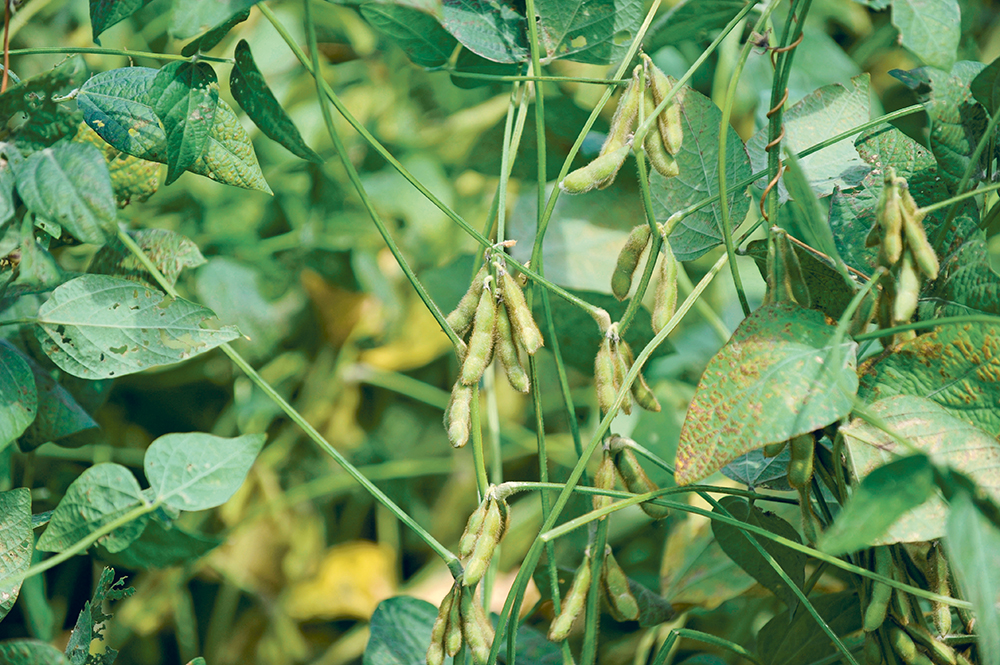The latest assessment of American seeded acreage changed the corn-soybean balance a little, but crop markets continued to fall because early summer weather in key global crop areas is favourable for 2022 production.
Crop markets are also weighed down by the general negative attitude in equities and commodity trade as fears continue that rising interest rates and high energy prices will push economies into recession.
Traders are taking the profits they made in the market rallies of the winter and spring and are adopting a lower risk position as many head into the summer holidays.
Read Also

Canada-U.S. trade relationship called complex
Trade issues existed long before U.S. president Donald Trump and his on-again, off-again tariffs came along, said panelists at a policy summit last month.
Over the course of June, almost all major crop futures markets fell with Chicago September wheat down 19.5 percent, December soy oil down 13.7 percent, December corn down 12.9 percent and soybeans down 3.4 percent. December soymeal managed a modest 1.2 percent rise in the month.
The ICE November canola contract fell 18.2 percent in the month while the Malaysian palm oil price fell almost 25 percent.
Futures continued to fall July 1 on American markets.
Palm oil production is expected to increase in the coming months, benefited by good growing weather. In the Malaysian currency, prices peaked near 8,000 ringgits per tonne in early March but had slipped below 5,000 by July 1 and could be down near 4,000 by the fourth quarter of this year, according to edible oil analyst Dorab Mistry of Godrej International Ltd.
The U.S. Department of Agriculture provided new data to consider on June 30 with its acreage report.
The report pegged soybean area at 88.33 million acres, down from 90.96 million in the March seeding intentions report and lower than the trade’s average forecast of 90.45 million.
Corn area is seen at 89.92 million acres, up a little from the seeding intentions report of 89.49 million and close to the trade’s guess at 89.86 million.
Wheat area was mostly as expected at 47.09 million acres compared to 47.35 million in March and the trade’s expectation of 47.02 million.
The largest drop in soybean area was in North Dakota, which, like the eastern Prairies in Canada, suffered excessive spring moisture. The USDA will resurvey North and South Dakota and Minnesota in July to get a more accurate count of what was ultimately seeded.
The smaller soybean area was bullish, but prices nevertheless fell because markets across the board are in a risk-off mindset.
In June, the S&P 500 index fell 8.4 percent, the NASDAQ fell 8.7 percent and the S&P/TSX index fell nine percent. Copper in June fell 13.5 percent and West Texas crude oil fell 5.5 percent.
Crop market players also think that demand-rationing prices are needed less now that buyers can look forward to newly harvested crops in the next few months.
Weather forecasts for the U.S. Midwest in the first half of July are mostly favourable for crop development with warm weather but regular rain.
The forecast for the Canadian Prairies in the first half of the month is also mostly favourable with low likelihood for heat waves or drought. Prairie crops need good weather in July to help crops that are behind normal development due to excessive moisture in the east and dry conditions in the west.
Favourable prospects also cover Russia’s wheat crop.
The Russia-focused Sovecon agriculture consultancy lifted its wheat production forecast by 600,000 tonnes to 89.2 million tonnes and expects relatively large carry-in stocks. Sovecon said improved prospects for the country’s spring wheat crop in Siberia more than made up for crop stress in the winter crop in southern regions.
The production figure is significantly higher than the June USDA forecast of 81 million tonnes.
Sovecon expects Russia’s wheat exports to reach a new record high of 42.6 million tonnes so long as shipping companies are willing to continue to put their ships into the Black Sea to serve Russia ports.
The market appears to be more focused on regions where prospects are good rather than on places where there are production problems.
Heat waves in southern Europe shaved yield prospects there, but that was already priced into the market and now the wheat harvest has begun.
The European Commission revised its wheat production outlooks last week, lowering the forecast for usable soft wheat crop to 125 million tonnes, down from 130.4 million previously and last year’s 130.1 million tonnes. This reflects the hot, dry weather in the southern parts of the European Union.
However, the commission expects EU wheat exports will be record high at 38 million tonnes.
The EC sees gross durum production at 7.2 million tonnes, down from 7.8 million last year.
Argentina’s farmers, confronted by drought and frost, have had trouble seeding the winter wheat crop. Area is expected to be the lowest in 12 years.















